If you recently broke your charger, you’re probably looking for a temporary replacement. Well, you don’t need to worry as there are plenty of alternative ways to power your laptop.
Most likely, you have an HDMI cable at your home. So, if you’re wondering about using this as your short-term charger, the short answer is – yes, you can!
However, you need to consider plenty of things before plugging in that HDMI cable. So, without further ado, let’s learn about them and get to know the simple techniques to charge a laptop with HDMI.
Is It Possible to Charge a Laptop With HDMI?
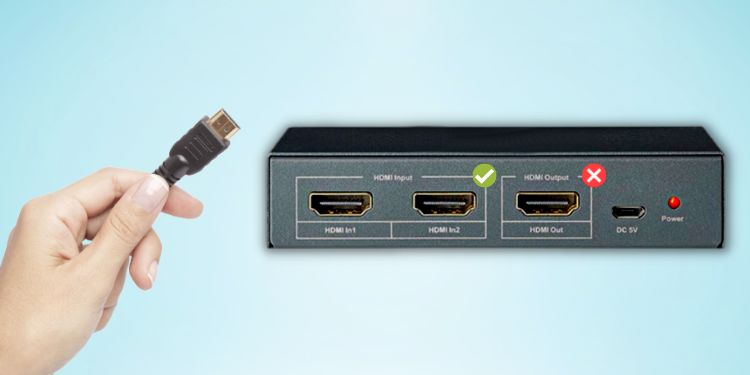
Speaking facts, it is HDMI not meant for charging any gadgets Instead, they transfer audio and video signals from one device to another.
Nevertheless, using some budget-friendly peripherals, you can make an HDMI cable work as your DIY laptop charger. However, you need to remember that every HDMI port does not support charging mode.
Hence, before moving forward, it’s important to know about the two types of HDMI ports – HDMI IN and OUT. While HDMI IN is meant to receive the HD signals, HDMI OUT is the one that fetches these signals.
Generally, modern laptops only support HDMI OUT as they are mostly used in displaying content on secondary monitors. Moreover, only a few manufacturers have embedded HDMI IN ports. Some of these models include Clevo X8100, Alienware 18, Alienware M17x R4, etc.
In those laptops supporting HDMI IN, you can directly connect an HDMI cable at one end. Then, you need to plug in the other end to a device with an HDMI-OUT port.
To check if yours has one, find the HDMI port and check if there’s HDMI-IN imprinted. Similarly, another method is to connect one end to the HDMI port of your laptop and the other end to a monitor’s HDMI-IN. If your laptop projects to the monitor, it means the port is HDMI-OUT.
So, making the story short – charging a laptop into an HDMI port isn’t feasible unless your PC supports HDMI-IN. Instead, you can use other different computer ports, for example, USB-C, to directly charge your laptop. Hence, the technique we’re going to use ahead involves the use of such cable.
When Should I Charge Laptop With HDMI?
Well, you should only charge your laptop with HDMI when it is absolutely necessary. This is because HDMI can only carry 5V while a laptop charger draws more than 100V. So, this is pretty clear that your HDMI cable will power your laptop incredibly slowly.
Moreover, you may face serious issues if you connect your laptop to the wrong port. For example, connecting two laptops with an HDMI cable might short-circuit both your devices. This is because both sides will start sending voltages from their HDMI-OUT. Thus, even though they have a protection circuit, one or both laptops may get permanently damaged.
Hence, we only suggest charging your laptop with HDMI in the following situations:
- Your laptop charger is broken, or you have forgotten to take it with you
- There is no other alternative charger
- There’s no power socket available in your area
- You’re in a hurry, and HDMI is the only option you have
How Can I Charge a Laptop With HDMI?
As mentioned earlier, you should only charge your laptop with HDMI in an emergency until the broken charger is repaired. However, charging isn’t as simple as you think because additional tools are required to power your computer successfully. In this section, we have covered the possible ways to do just that.
Using HDMI to USB-C Adapter
Today, several modern laptops come with a USB-C IN port. Basically, these are quite useful as they assist in transferring high-speed data and power your device with a high-wattage power supply.
In fact, if you have a USB-C cable available, you can directly plug that in and start charging. However, this depends on the situation. Certainly, you’ll need an alternative if you don’t have this cable or there’s no power socket near you.
In such a scenario, you could use an HDMI to USB-C adapter, if available. This draws voltage from the HDMI-OUT source and powers your laptop with its USB-C port.
But before moving forward, make sure you have the following utilities ready:
- A USB-C IN port on your laptop
- An HDMI adapter with a USB-C OUT port
- An electronic device with an HDMI-OUT port
- An HDMI cable
Well, you could use another laptop or any console having an HDMI-OUT port. Moreover, a handful of smartphones, tablets, and even TVs come with HDMI-OUT. Here’s an article on how to use your TV as a computer monitor.
Once you’ve made the necessary things ready, follow the below guideline to charge your laptop correctly:
- Firstly, plug in the first end of the HDMI cable to the HDMI-OUT port of the applicable device.
- Next, insert the other end into the HDMI port of the adapter.
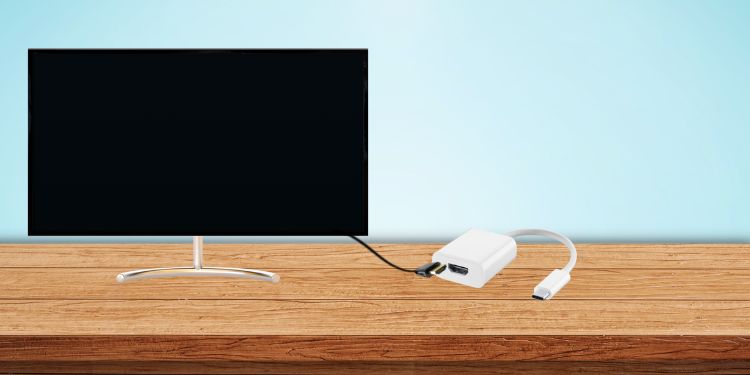
- Now connect your laptop using the USB-C connector present in the HDMI to USB-C adapter.
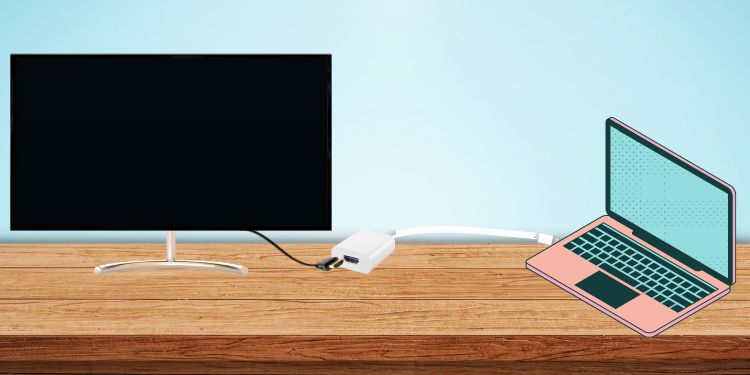
- Check the battery icon on the system tray of your Windows taskbar. If there’s a plugged-in icon, know that your laptop is now charging.
To be super sure, you can even hover the mouse pointer over the button icon. If you see “plugged-in” beside the battery percentage, it means that this technique is working.
Using Universal Adapter
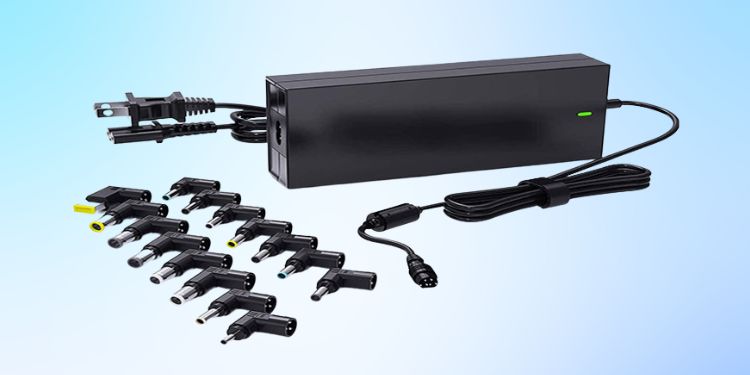
These days, we can easily get a Universal Charging Adapter or USB HUB that contains both HDMI input and output ports. Apart from just HDMI, these have the input and output ports of several cables, including USB-C, USB-B, USB-A, and more.
Moreover, when you buy the Universal Charging Adapter, it comes with charging tips for several laptop brands. This way, it’s pretty easy to power your device using an HDMI cable and the charging tip of your brand if available.
However, if you do not find the charging dongle that supports your laptop, you may require a USB-C cable. Although you could directly use the USB-C cable to power your PC, this won’t be feasible if you don’t have a power adapter.
So, here are the following things to assemble before you start using the Universal Adapter:
- A Universal Charging Adapter or USB HUB
- Power socket to connect the adapter’s power cord
- An HDMI cable
- Any device that supports the HDMI-OUT port
- A charging tip that can be inserted into your laptop’s charging port
- A USB-C cable (optional)
Once the necessary items are ready, here’s what you need to do to power your laptop with the HDMI:
- First of all, connect the adapter’s power cord to a power socket and make sure it is turned on.
- Next, take an HDMI cable and insert its first end into the HDMI-OUT port of an electronic device.
- Then, plug in its other end to the HDMI-IN port of the Universal Adapter.
- Now, find the applicable charging tip and insert the first end into the adapter and the second end into the laptop’s charging port.
- Use a USB-C cable if you do not have the charging dongle. Basically, you need to connect the USB-A end to its respective port and then connect the USB-C end to the laptop’s USB-C port.
- Once the necessary connection is made, check the battery icon on your Windows taskbar to ensure your laptop is charging.
If the system tray doesn’t show battery, here’s how you can show all the taskbar corner overflow icons.
Using the Laptop’s HDMI IN Port
If you’ve already got a laptop with an HDMI IN port, all you have to do is find an electronic device that supports an HDMI OUT port. As mentioned earlier, any other laptop, TVs, mobile phones, tablets, and gaming consoles are some gadgets supporting these ports.
Now, follow the below guide to ensure a proper connection and charge your laptop the right way:
- Connect the first end of the HDMI cable to the output HDMI port of the applicable electronic device.
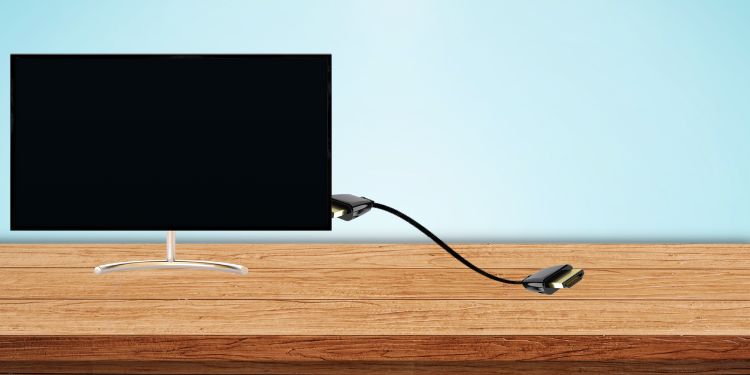
- Next, plug in the other end to the input HDMI port of your laptop.
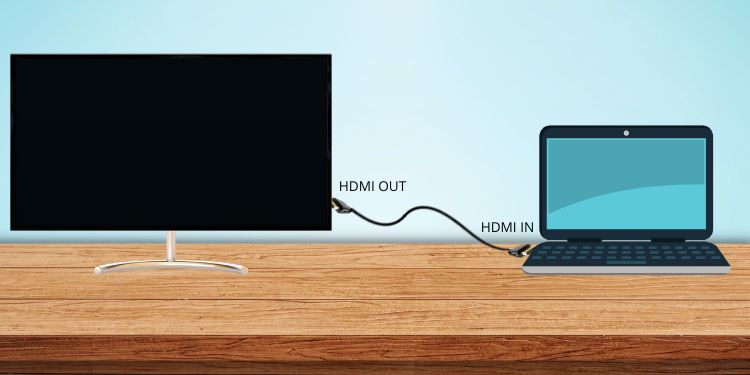
- If the battery icon on the system tray shows a connector symbol, your laptop is now charging successfully.